How to Train Clients With Special Needs (Free Guide)
Gaining the skills to train clients with special needs can greatly enhance your personal training practice. However, it’s essential to have the correct tools and understanding to effectively learn how to train clients with disabilities. Certain features of personal training software can be invaluable in this process. Learn how to train special needs clients and all the best personal training tools you’ll need in this detailed guide.
- Training clients with special needs requires a patient, adaptable, and empathetic approach that takes into account the unique physical, cognitive, and emotional needs of each individual.
- Most clients with special needs will benefit from customized workouts that are tailored to their abilities and goals, along with clear communication and a supportive environment to encourage participation and progress.
- The use of workout and assessment software can assist in tracking progress, planning appropriate workouts, and managing individualized training plans, ensuring your clients reach their goals safely and effectively.
Guiding clients with special needs towards their fitness goals can provide personal trainers a deeply rewarding opportunity to make a profound impact on their clients’ fitness journeys and overall well-being.
To effectively train clients with special needs, it’s crucial to not only understand the intricacies of their unique needs but also to have the right tools to monitor progress, adapt training plans, and communicate effectively; that’s where personal training software becomes essential. By leveraging the features offered by the best online personal training software, you can guide clients with special needs in a way that enhances their fitness, confidence, and enjoyment of physical activity.
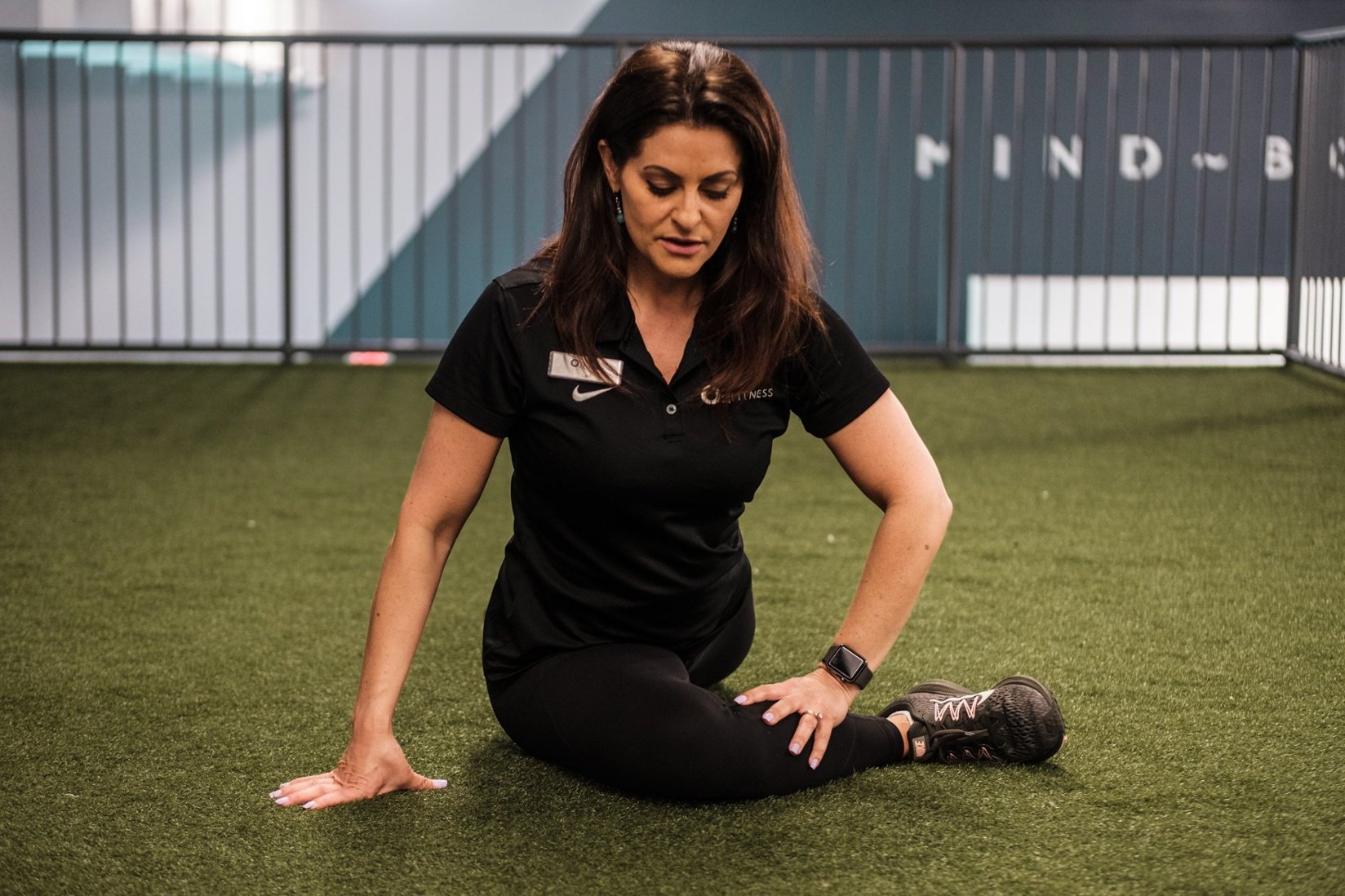
Experience the leading personal training software from Exercise.com by booking a demo today!
Understanding the Importance of Training Clients with Special Needs
Training clients with special needs requires a deep understanding and a specialized approach to ensure their safety, progress, and inclusivity. In this article, we will explore the importance of training clients with special needs, identify the diverse spectrum of special needs, discuss how to create individualized training programs, address considerations for clients with physical disabilities, cognitive impairments, and sensory disorders, and provide strategies for overcoming challenges and collaborating with healthcare professionals. We will also cover topics such as communication, incorporating assistive devices and technology, tracking progress, providing emotional support, attracting special needs clients to your fitness business, and resources for continuing education and professional development in this field.
Training clients with special needs goes beyond simply providing a workout routine. It is about empowering individuals, improving their quality of life, and fostering inclusivity in the fitness industry. People with special needs deserve the same opportunities as anyone else to reach their fitness goals and enjoy the benefits of regular exercise. By providing specialized training, fitness professionals can make a significant positive impact on the lives of their clients, both physically and mentally.
This approach also helps break down barriers and misconceptions surrounding special needs. By creating an inclusive and welcoming environment, fitness professionals can contribute to raising awareness and promoting inclusivity on a broader scale.
One important aspect of training clients with special needs is the need for individualized programming. Each client may have unique physical or cognitive challenges that require modifications to their exercise routine. Fitness professionals must have a deep understanding of their clients’ specific needs and limitations in order to design safe and effective workouts. This may involve adapting exercises, using specialized equipment, or incorporating alternative forms of movement.
In addition to physical adaptations, it is crucial for fitness professionals to prioritize communication and establish a strong rapport with their clients. Building trust and understanding is essential in order to create a supportive and empowering training environment. This may involve using clear and concise instructions, providing visual cues, or utilizing alternative forms of communication for clients with speech or hearing impairments.
Identifying the Diverse Spectrum of Special Needs
When training clients with special needs, it is crucial to recognize the broad range of conditions and disabilities that fall under this umbrella. Special needs can encompass physical disabilities, cognitive impairments, sensory disorders, and more. Each person will have unique requirements and challenges, and their training programs must reflect this individuality.
Physical disabilities can range from mobility impairments to conditions affecting strength, coordination, or balance. Cognitive impairments can include intellectual disabilities, learning disabilities, or memory deficits. Sensory disorders may involve hearing or visual impairments, as well as sensitivities to touch, sound, or light. Awareness and understanding of these diverse needs are essential for designing effective training programs and accommodations.
It is important to note that special needs can also include developmental disorders such as autism spectrum disorder (ASD) and attention deficit hyperactivity disorder (ADHD). ASD is a neurodevelopmental disorder that affects social interaction, communication, and behavior. Individuals with ASD may have difficulty with verbal and nonverbal communication, social interactions, and repetitive behaviors. ADHD, on the other hand, is a neurodevelopmental disorder characterized by inattention, hyperactivity, and impulsivity. These individuals may struggle with focusing, organizing tasks, and controlling impulses.
Creating Individualized Training Programs for Clients with Special Needs
Individualization is key when training clients with special needs. Fitness professionals must take the time to assess each client’s abilities, goals, and limitations thoroughly. This assessment should consider medical history, physical capabilities, cognitive abilities, sensory sensitivities, as well as any recommended adaptations or modifications from healthcare professionals.
Based on this assessment, a tailored training program can be created. This program should include appropriate exercises, modifications, and progressions to ensure the client’s safety and progress. It is essential to focus on functional movements, strength, flexibility, and cardiovascular fitness, adapting exercises and activities as needed to suit the individual’s specific needs.
Additionally, when creating individualized training programs for clients with special needs, it is important to consider their communication preferences and learning styles. Some clients may benefit from visual cues or written instructions, while others may require verbal or hands-on guidance. By understanding and accommodating their preferred communication and learning methods, fitness professionals can enhance the effectiveness of the training program and improve the client’s overall experience.
Furthermore, ongoing evaluation and reassessment are crucial in the development of training programs for clients with special needs. As clients progress and their abilities change, it is essential to modify and adjust the program accordingly. Regular check-ins and feedback sessions with the client can provide valuable insights into their progress, challenges, and goals, allowing for necessary adaptations to be made. This continuous evaluation ensures that the training program remains relevant and effective in helping clients with special needs achieve their desired outcomes.
Essential Considerations for Training Clients with Physical Disabilities
When working with clients who have physical disabilities, it is crucial to address accessibility and safety considerations. Understand the client’s mobility limitations, use assistive devices or adaptive equipment when necessary, and modify exercises to accommodate their needs. For instance, someone using a wheelchair may require different exercises that target upper body strength and stability.
It is also important to pay attention to proper body mechanics, avoiding movements that may aggravate or cause pain in the client’s specific condition. Providing a safe training environment that minimizes the risk of falls or injury is paramount.
Another important consideration when training clients with physical disabilities is to ensure effective communication. It is essential to establish clear and open lines of communication with the client to understand their goals, preferences, and any specific challenges they may face. This will help tailor the training program to their individual needs and ensure that they feel heard and supported throughout the process.
In addition, it is crucial to stay up-to-date with the latest research and advancements in adaptive exercise techniques. This will enable trainers to provide the most effective and innovative training methods for clients with physical disabilities. By staying informed and continuously learning, trainers can offer the best possible support and guidance to their clients, helping them achieve their fitness goals and improve their overall well-being.
Effective Strategies for Training Clients with Cognitive Impairments
Clients with cognitive impairments may require additional support and guidance during training sessions. It is essential to communicate clearly, using simple instructions, visual aids, or demonstrations to ensure understanding. Patience, repetition, and positive reinforcement are key elements when working with this population. Breaking down tasks into simpler steps can help clients with cognitive impairments grasp and execute exercises more effectively.
Consistency and routine are also crucial for clients with cognitive impairments, as it helps build familiarity and promotes a sense of security. Creating a structured environment and establishing clear expectations can contribute to their comfort and success during training.
It is important to note that every client with cognitive impairments is unique, and their needs may vary. Therefore, it is essential to individualize training programs and adapt strategies based on their specific abilities and limitations. Regular assessments and ongoing communication with the client and their caregivers can help identify any necessary adjustments or modifications to the training approach.
Adapting Exercises and Equipment for Clients with Sensory Disorders
Clients with sensory disorders may face challenges related to touch, sound, or visual stimuli during training sessions. Fitness professionals should be sensitive to these sensory sensitivities and make necessary accommodations. This may involve using quieter equipment, providing headphones to block excessive noise, or adapting exercises to minimize sensory discomfort.
For example, individuals with visual impairments may benefit from auditory cues or tactile markers to guide their movement during exercises. Understanding and respecting these particular needs can contribute to a more inclusive and comfortable training experience for clients with sensory disorders.
Another important consideration when working with clients with sensory disorders is the use of lighting. Some individuals may be sensitive to bright or flickering lights, which can cause discomfort or sensory overload. Fitness professionals can adjust the lighting in the training area by using dimmer switches or providing alternative lighting options, such as soft, diffused lighting.
In addition to modifying the physical environment, it is crucial to communicate effectively with clients with sensory disorders. Fitness professionals should use clear and concise instructions, avoiding ambiguous or complex language. Visual aids, such as diagrams or pictures, can also be helpful in conveying information. By adapting communication methods, trainers can ensure that clients with sensory disorders fully understand the exercises and feel supported throughout their training sessions.
What is important to remember when starting a fitness plan with a client with disabilities?
When starting a fitness plan with a client with disabilities, it’s crucial to approach the process with empathy, respect, and a person-centered approach. Understand the specific abilities, limitations, and goals of the individual and tailor the fitness plan accordingly. Prioritize safety and ensure that exercises are appropriate and modified as needed to accommodate their unique needs. Foster open communication, actively listen to their concerns, and address any barriers or challenges that may arise. Create a supportive and inclusive environment that empowers the client and promotes their physical and emotional well-being throughout their fitness journey.
Which exercises are most important when working with special needs clients?
The most important exercises when working with special needs clients vary depending on their individual abilities, goals, and conditions. However, some commonly beneficial exercises include activities that enhance cardiovascular fitness, such as walking, cycling, or swimming. Strength training exercises using bodyweight, resistance bands, or light weights can help improve muscle strength and function. Flexibility exercises, including stretching and yoga, can enhance mobility and range of motion. Balance and coordination activities, such as stability exercises or tai chi, can help improve overall stability and reduce the risk of falls. The specific selection of exercises should be customized to each client’s needs and abilities, ensuring that they are safe, enjoyable, and contribute to their overall well-being.
What is Level 3 exercise for disabled clients?
“Level 3 exercise” for disabled clients refers to a classification system used to describe the intensity or difficulty level of exercises. It may vary depending on the specific framework or program being used. Generally, Level 3 exercises are considered to be of moderate intensity and complexity. They may involve activities that challenge strength, endurance, balance, coordination, or a combination of these factors. Examples could include resistance training exercises with moderate weights, moderate-intensity aerobic exercises, or balance exercises that require controlled movements. The exact definition and classification of Level 3 exercises may vary, so it is important to refer to the specific exercise program or guidelines being followed.
What are the exercise guidelines for people with disabilities?
Exercise guidelines for people with disabilities include:
- Consult with a healthcare professional: Before starting an exercise program, individuals with disabilities should consult with a healthcare professional who can provide personalized recommendations based on their specific condition, abilities, and limitations.
- Choose appropriate exercises: Select exercises that are safe and suitable for the individual’s abilities and fitness level. Focus on a combination of cardiovascular exercises, strength training, flexibility exercises, and balance and coordination activities.
- Modify exercises as needed: Adapt exercises to accommodate the individual’s abilities and limitations. This may involve adjusting the range of motion, using assistive devices or equipment, or incorporating seated or supported exercises.
- Gradually progress the intensity: Start with low to moderate intensity exercises and gradually increase the intensity and duration over time. The progression should be gradual and individualized to avoid overexertion or injury.
- Prioritize safety: Pay attention to proper form and technique during exercises to minimize the risk of injury. Use assistive devices, supportive equipment, or the assistance of a spotter if necessary.
- Listen to the body: Individuals with disabilities should listen to their bodies and modify or stop exercises if they experience pain, discomfort, or fatigue. It’s important to find the right balance between challenging oneself and avoiding excessive strain.
- Include variety and enjoyment: Incorporate a variety of exercises to engage different muscle groups and prevent monotony. Focus on activities that the individual enjoys and finds motivating to enhance adherence to the exercise program.
- Consider accessibility and inclusivity: Ensure that the exercise environment, facilities, and equipment are accessible and accommodate the needs of individuals with disabilities. This may involve providing ramps, adaptive equipment, or modifying the layout of the exercise space.
- Seek support and guidance: Encourage individuals with disabilities to seek support and guidance from qualified fitness professionals, such as certified trainers experienced in working with people with disabilities. These professionals can provide proper guidance, support, and modifications tailored to the individual’s needs.
By following these exercise guidelines, individuals with disabilities can safely and effectively engage in physical activity, improve their fitness and overall well-being, and enjoy the benefits of regular exercise.
Use the Best Personal Training Software to Offer a Stellar Client Experience
Training clients with disabilities requires a comprehensive and tailored approach. See how Exercise.com can help.

To learn more about how Exercise.com can help you run your fitness business, book a demo now!
Creating Training Plans for Clients Who Have Special Needs
Here’s how you can help your clients accomplish their goals by using workout plan creator software to create workout plans, run fitness challenges, offer online workout groups, message clients, and more, all from your very own custom branded fitness apps.
Exercise.com stands out as an all-in-one fitness business management software with comprehensive workout plan sales capabilities. The robust member management, billing & invoicing, and unique fitness assessment tools offer a one-stop solution for fitness business needs. Here’s just some of what you can do with the Exercise.com platform:
Engage with clients via automations.
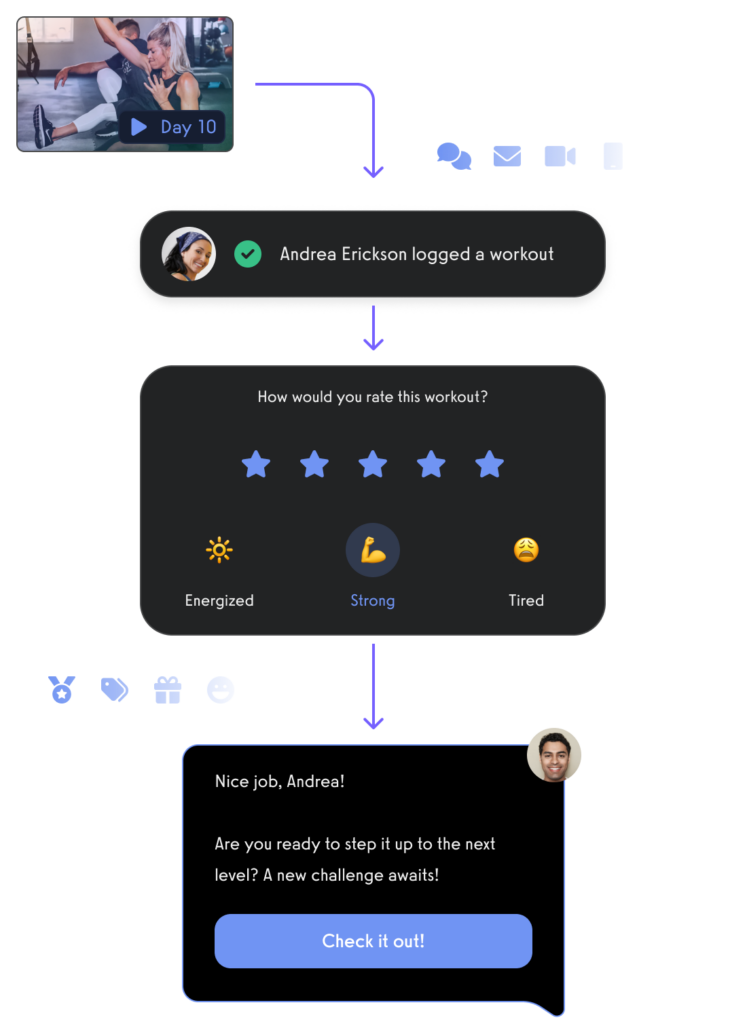
Manage leads with a fitness CRM. Read More: Best CRM Software for Gyms
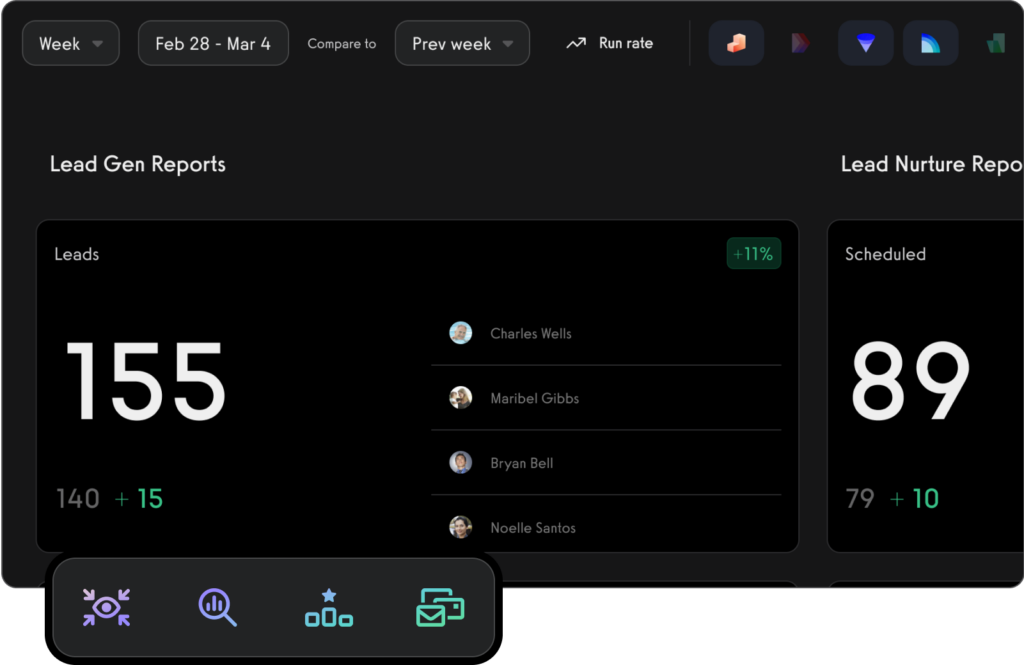
Create and send fitness assessments with ease.
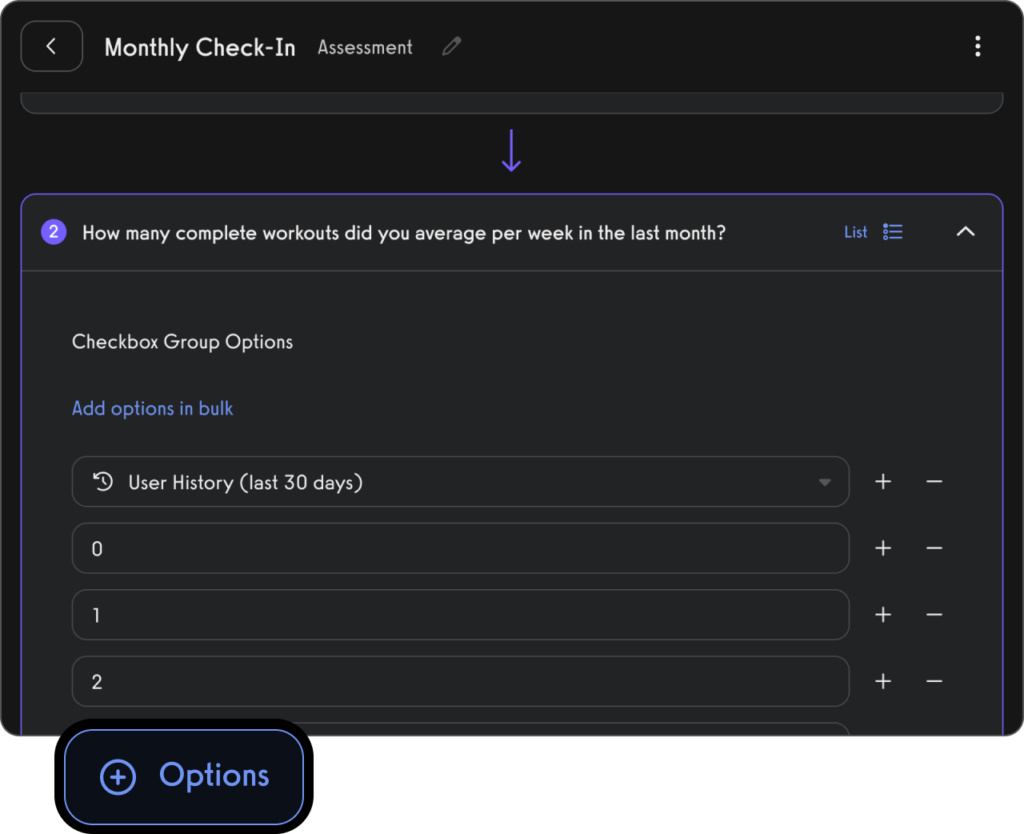
Use fitness habit tracking to inspire and motivate personal training clients (in-person and remote).

Use fitness progress photos to engage with clients.
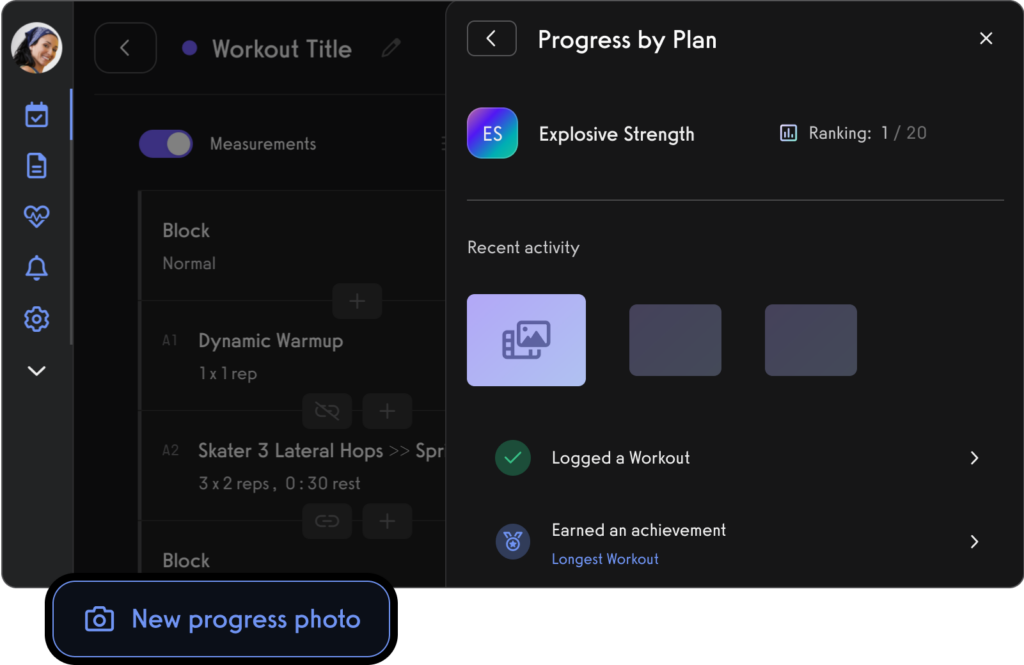
Use fitness leaderboards to track performance and inspire healthy competition.
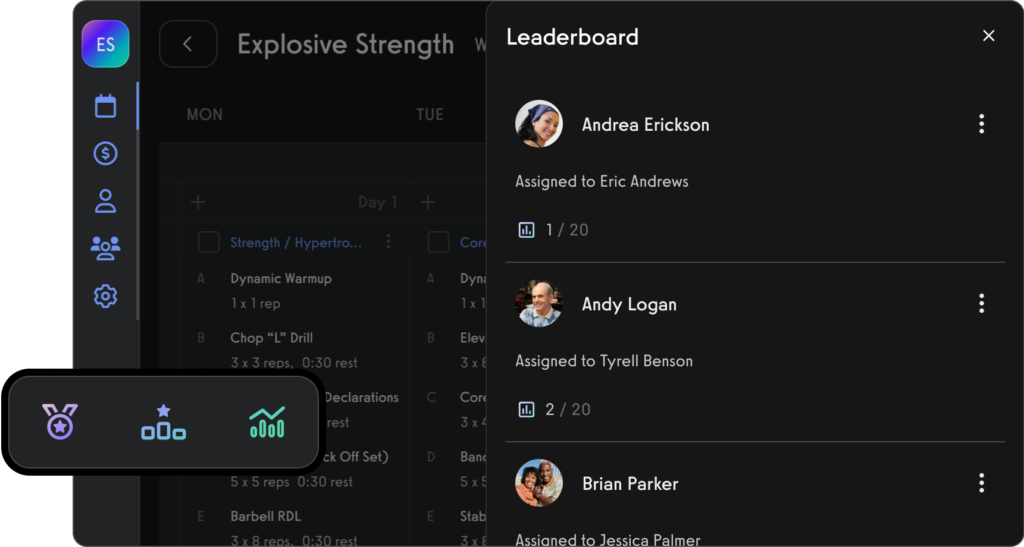
Use the exercise demonstration video library or create your own custom exercise demonstration videos.
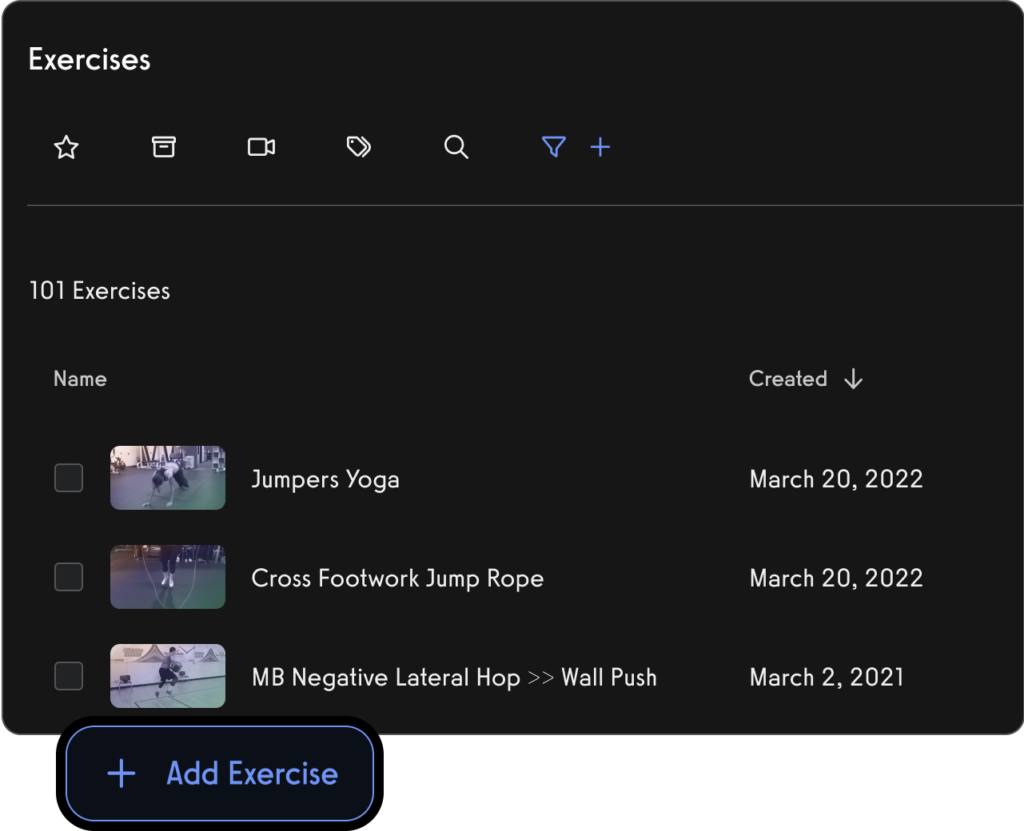
Create workout plans for parents and dependents, teams and more.

Manage personal training clients with ease.
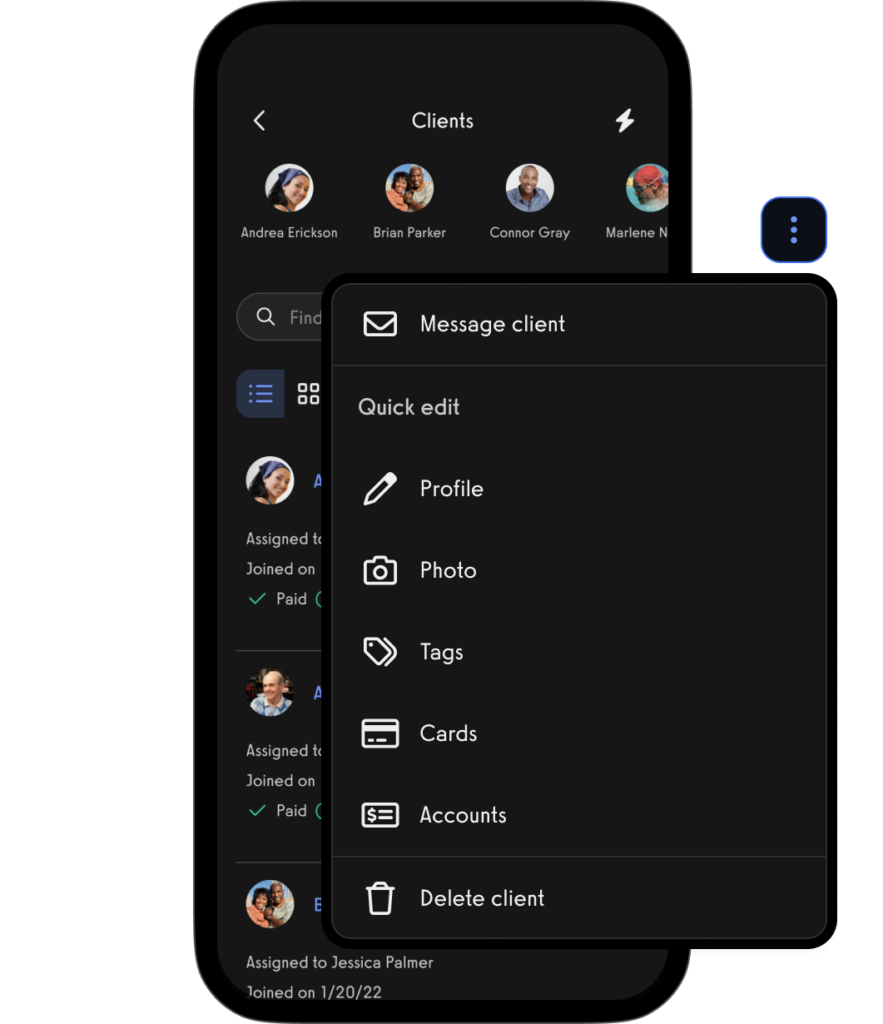
Book appointments for clients (Read More: Best Gym Booking Software)

Create classes and fitness groups

Manage fitness challenges (Read More: 100+ Fitness Challenge Ideas)
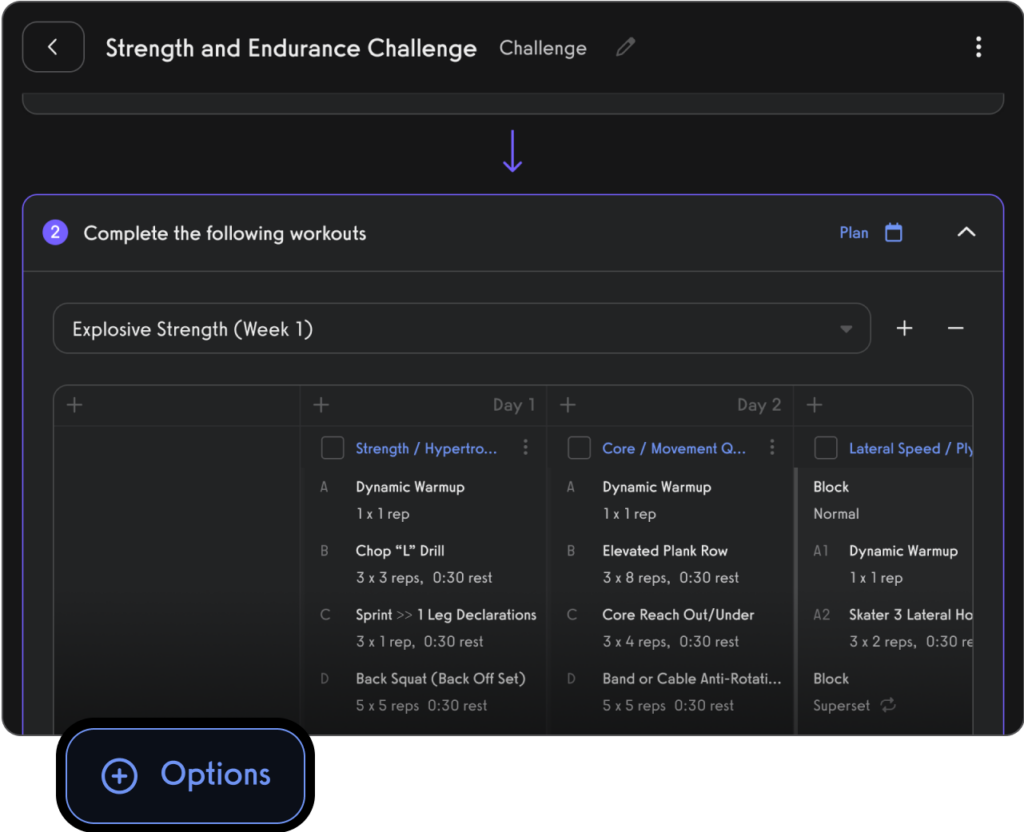
Process payments for open gym, classes, and personal training.

Communicate with gym members, athletes, team members, personal training clients, class members, parents, and dependents via SMS, email, and in-app push notification.
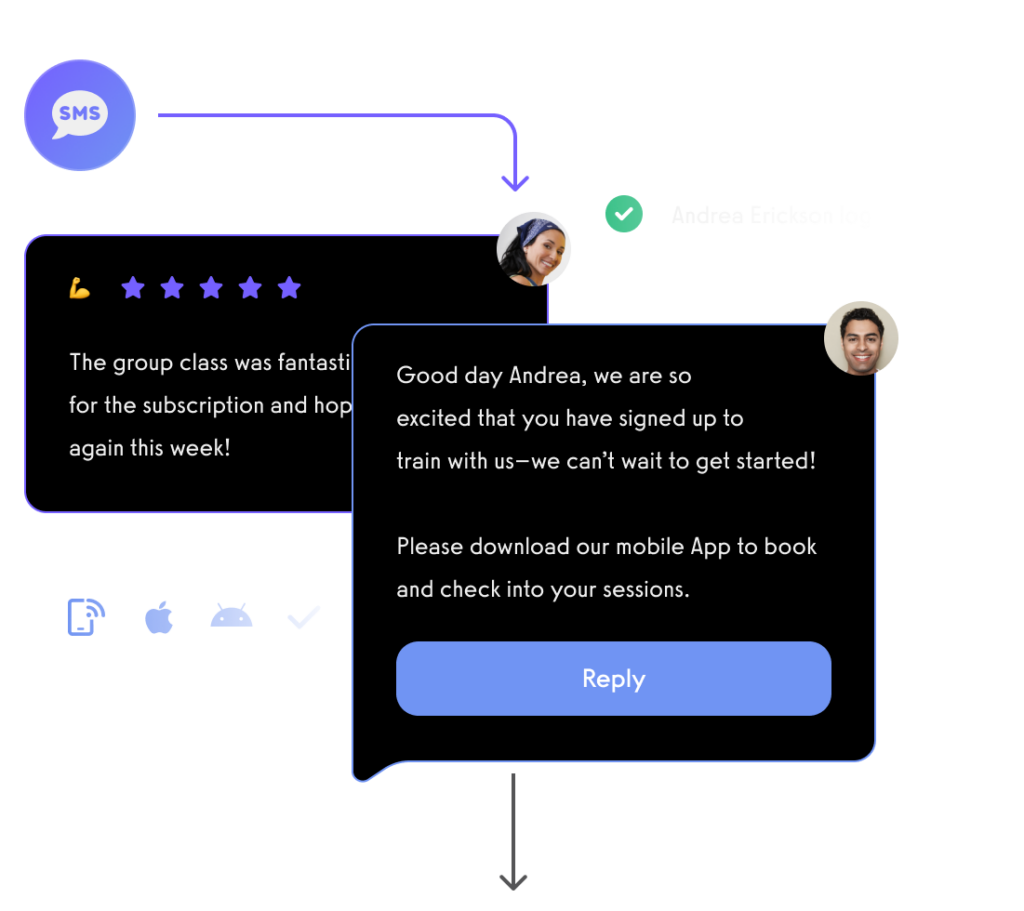
View performance over time, track personal records, and other fitness stats with performance reporting dashboards.

And of course, view all of your fitness business reports easily too.

All from your custom-branded fitness apps (Read More: Best Gym Mobile Fitness Apps Software)

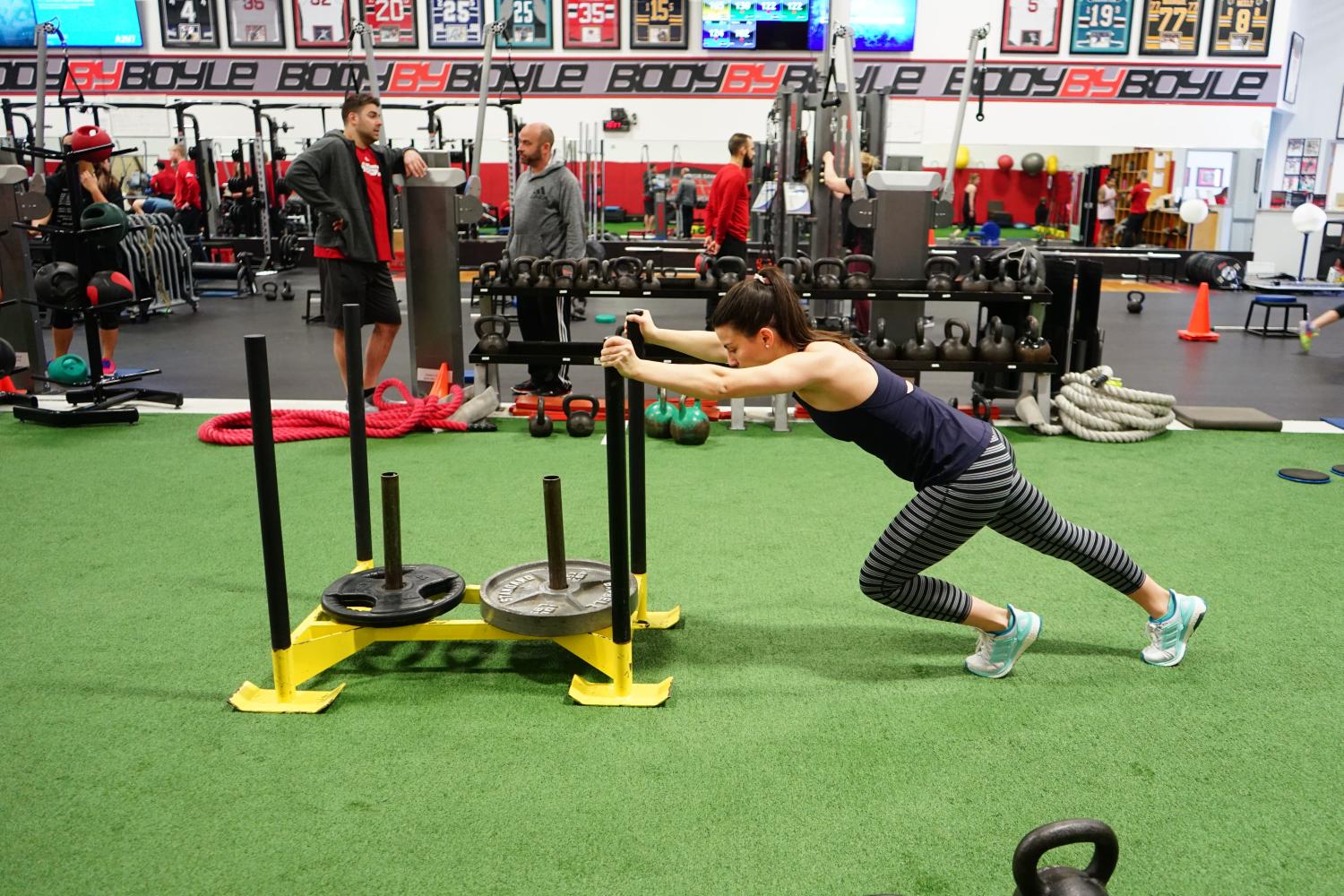
Want to learn how your fitness business can take it to the next level? Get a demo now!









